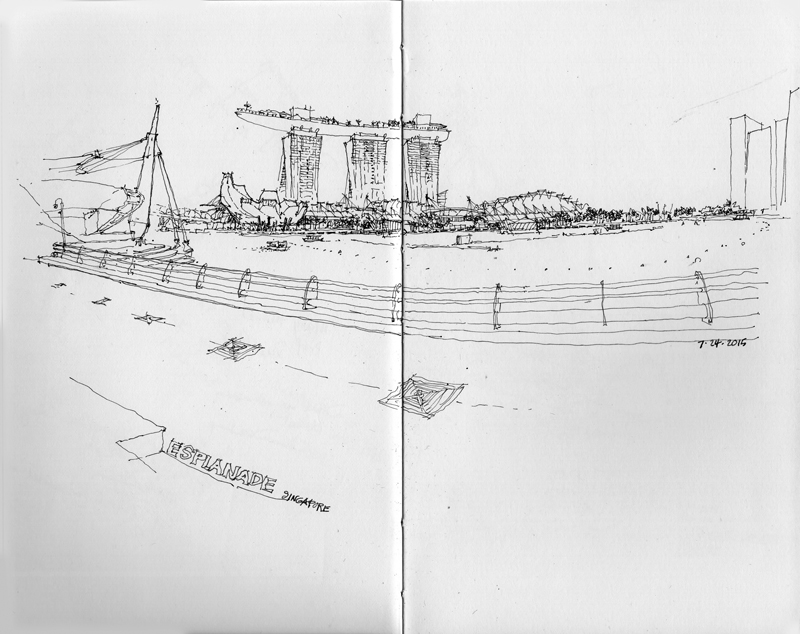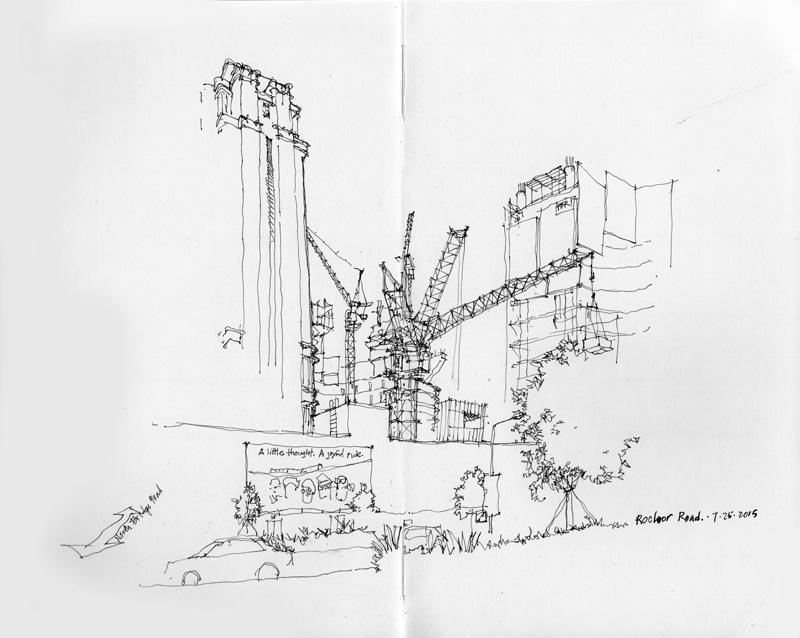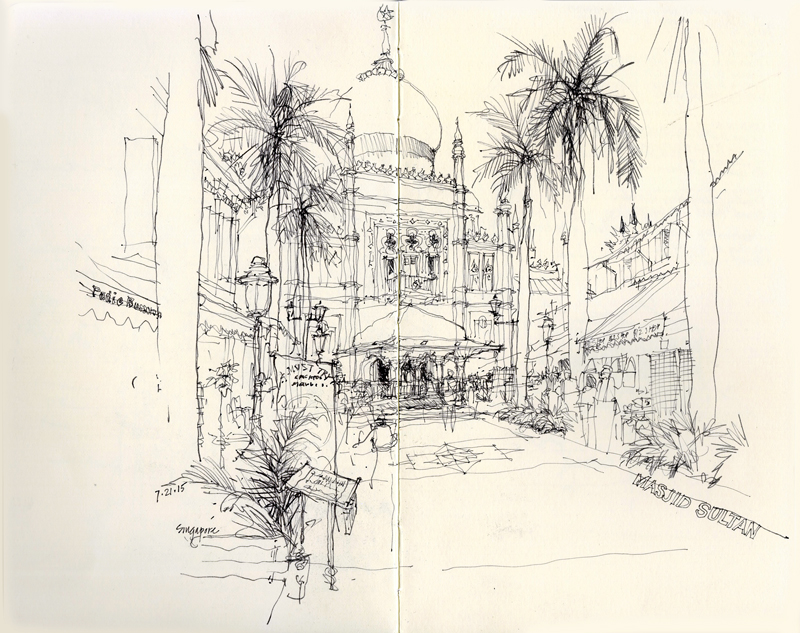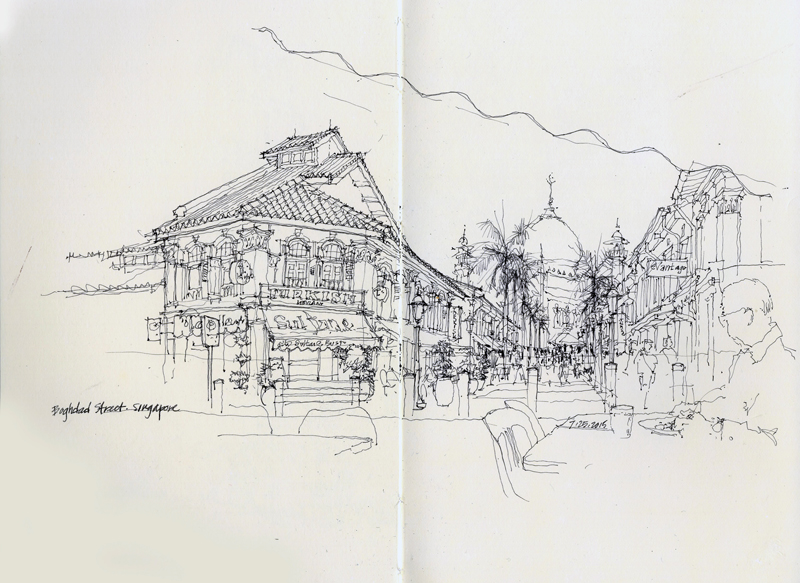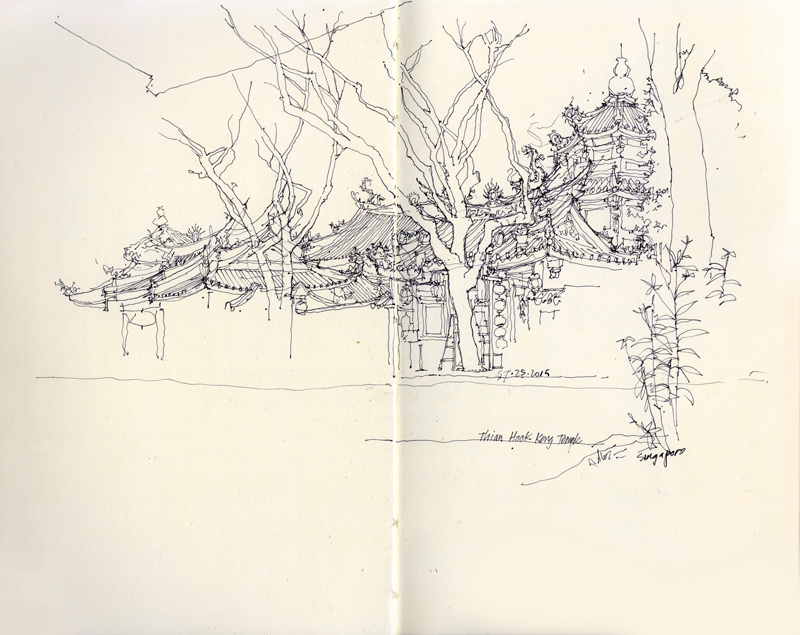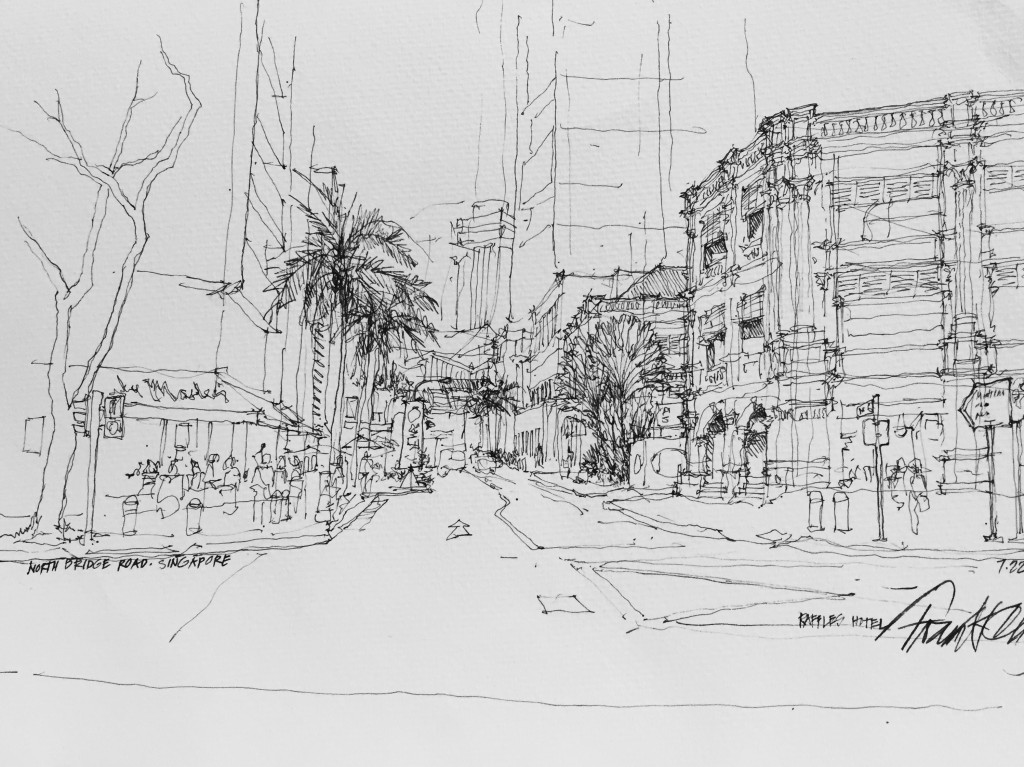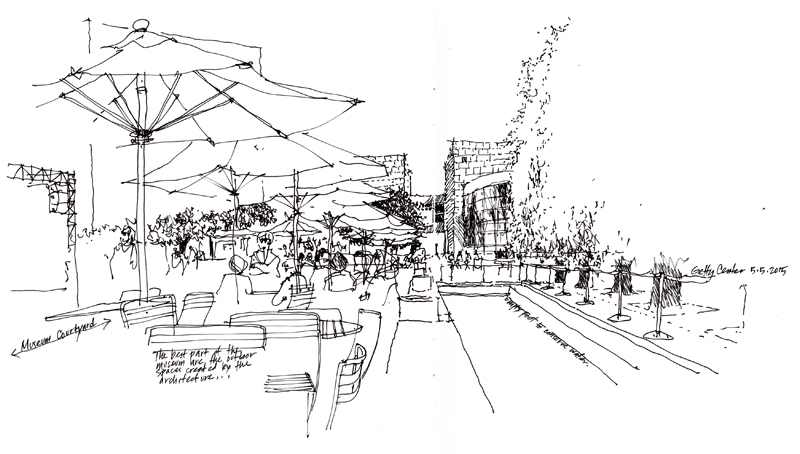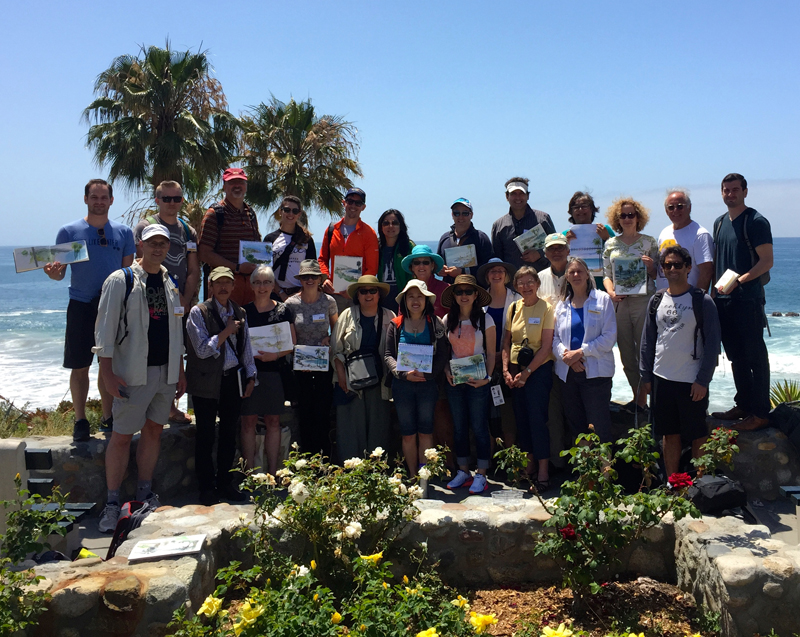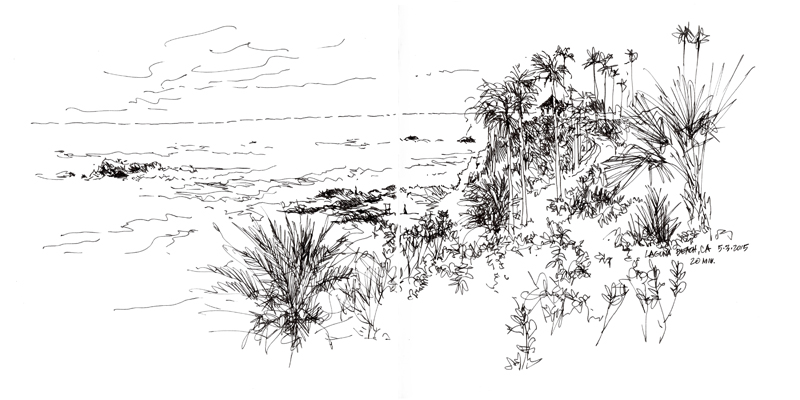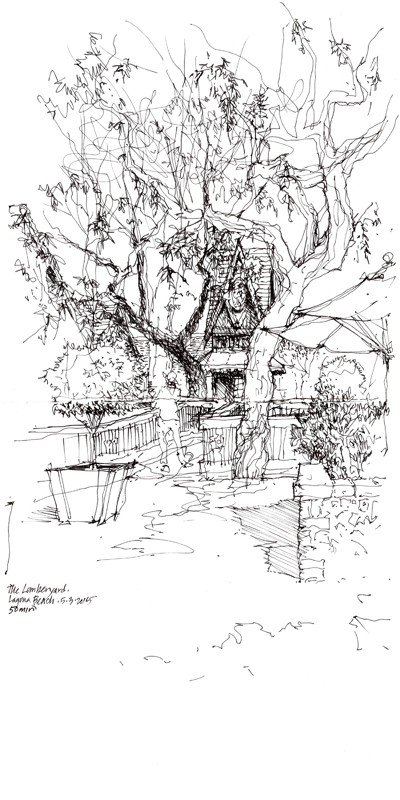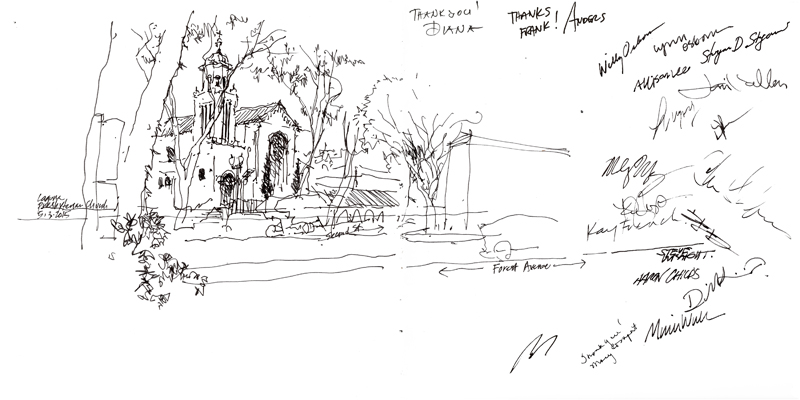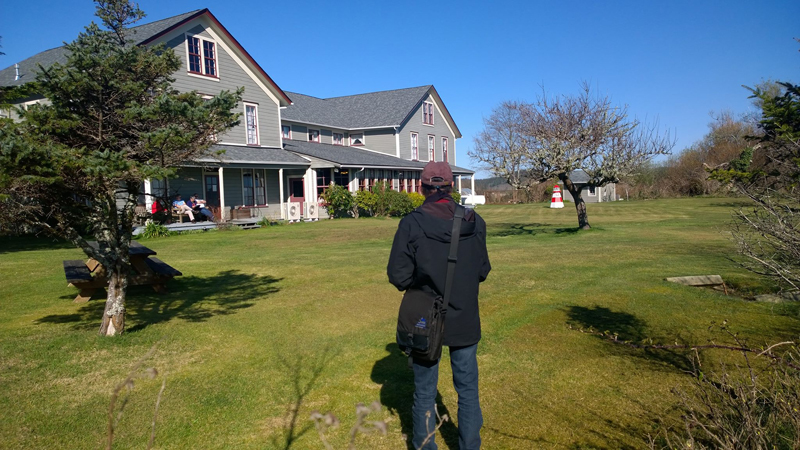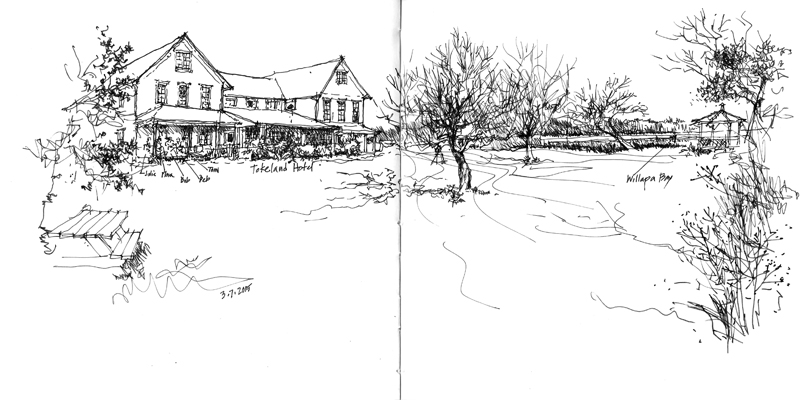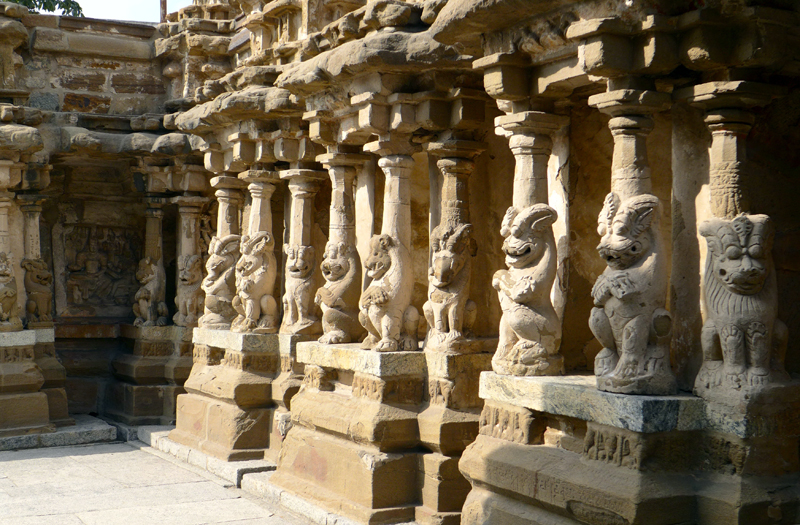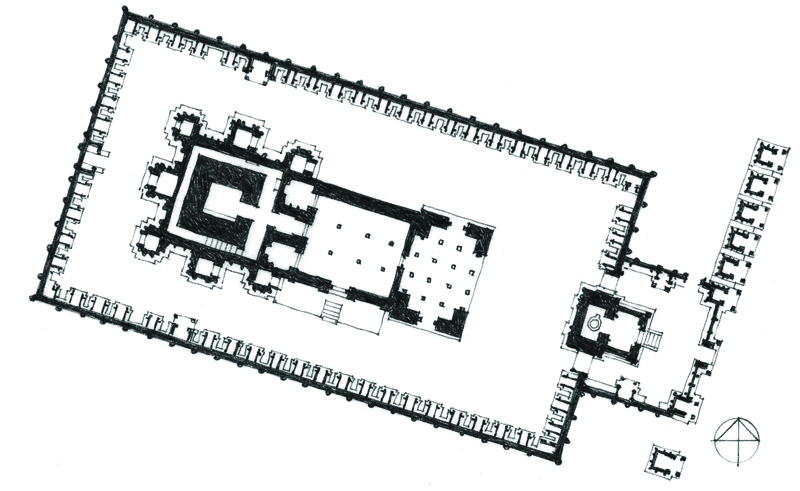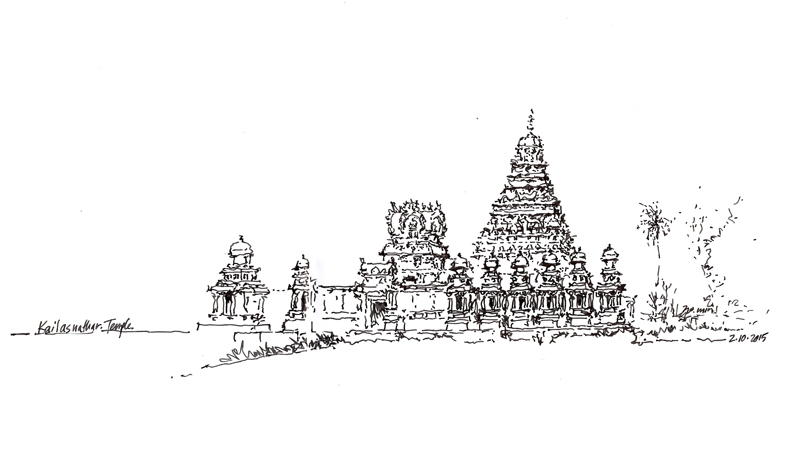One final post on Singapore. Walking around the city during the Urban Sketching Symposium, I drew a few scenes that illustrate diverse aspects of this metropolis, with evidence of its Colonial past, ethnic neighborhoods, and modern skyscrapers co-existing in a modern Asian city-state. In the last sketch, the circle with SG above the number 50 refers to this year being the 50th anniversary of Singapore’s separation from Malaysia and formation as an independent republic on August 9, 1965.
Category Archives: Travel
Masjid Sultan
The first day in Singapore, I wandered over to the Kampong Glam neighborhood of Singapore to sketch the Masjid Sultan (Sultan Mosque). Constructed in 1824 as a one-story structure for Sultan Hussein Shah, the first sultan of Singapore, the mosque was remodeled and enlarged in 1932 to its present form. Relative to the surrounding street grid, the mosque was skewed, perhaps to orient the mihrab to Mecca. It was important for me to capture this subtle shift as I drew this view looking down the pedestrian way of Bussorah Street.
A few days later, I again visited the area hoping to draw one of the side streets. Instead, I chose to enjoy a refreshing iced coffee at an outdoor cafe with a view both of the Masjid Sultan as well as some the shops along Baghdad Street.
Two Chinese Temples
The day before the Urban Sketching Symposium started in Singapore, I wandered along Waterloo Street, the site of my workshop. I came upon this Chinese temple, seemingly grafted onto a three-story office building.
In contrast to the Waterloo Street temple is the Thian Hock Keng Temple in the Chinatown district, which is one of the oldest Hokkien temples in Singapore. The more traditional layout was completed in 1842 to accommodate Chinese immigrants giving thanks for a safe voyage. Because of the heavy street traffic, I decided to focus on the composition of tiled roofs and animated ridge and hip lines, leaving the rest to the imagination.
Raffles Hotel Singapore
The Raffles Hotel is an icon in Singapore, having been established in 1887 by two Armenian brothers. Named after Stamford Raffles, the founder of modern Singapore, it was designed by the architect Regent Alfred John Bidwell of Swan and Maclaren.
This view, looking down Seah Street from North Bridge Road, is one of the many drawings done during the 6th International Urban Sketchers Symposium in Singapore that wIll be auctioned off to benefit the urban Sketchers organization.
The Getty Center
After the Orange County workshop, Deb and I spent a day at the Getty Center, a campus of the Getty Museum in the Brentwood neighborhood of LA. The complex of galleries, library, offices, and research institute designed by Richard Meier is situated along two ridges of a hill in the Santa Monica Mountains. The architecture is striking, but as I noted on my sketch of the museum courtyard, the most attractive and enjoyable part of our visit were the landscaped open spaces and gardens created by the architecture. Notable is the Central Garden designed by artist Robert Irwin.
Line-to-Color Workshop in Orange County
We spent two wonderful and gratifying days in Orange County last weekend, drawing at the Mission San Juan Capistrano, along the Laguna Beach promenade, and in the confines of the Lumberyard courtyard. Thanks to all of the workshop participants for their enthusiasm, hard work, and high spirits.
Despite the numerous books, and now videos, on sketching and drawing that are available, they cannot match the immediacy of hands-on teaching and learning. It is difficult to replicate the experience of standing or sitting side-by-side, looking out at the same scene, and discussing and demonstrating the ways of seeing that are crucial to on-location drawing.
Sixth International Urban Sketchers Symposium
Urban Sketchers Singapore and Temasek Polytechnic are hosting the 6th International Urban Sketchers Symposium this year. There’s a great lineup of faculty and presenters who will be offering workshops, lectures, and other activities from the 22nd through the 25th of July. For more information about the schedule, programming, and registration information, please visit: <http://singapore2015.urbansketchers.org>.
Tokeland, Washington
Photo by Flora Goldwaithe
This past weekend, I took a road trip with Deb and friends to Tokeland, Washington, a narrow spit that juts out where the Pacific Ocean curves in to form Willapa Bay. The Tokeland Hotel where we stayed is a National Historic landmark, built in 1885 as a farmstead home and later enlarged in 1899 to become a hotel. Abandoned in 1984, the hotel was restored in 1989 and is now a tranquil getaway in southwest Washington. This is a panoramic view of the “front” of the hotel, set in a meadow facing onto Willapa Bay.
Kailasanathar Temple
At the end of my recent trip to India, Xavier Benedict and I drove down from Chennai to Kanchipuram, where we visited several Hindu temple sites. The most impressive of these was Kailasanathar Temple, the 7th-century Pallava shrine dedicated to the god Shiva. The sandstone structure has weathered over the past 1200 years but is being restored and retains its tiered, sculptural elegance.
While one can read descriptions, study drawings, and pore over photographs of architecture, nothing can compare with actually visiting and experiencing a place. The sights, sounds (or lack thereof), and sense of scale immediately become apparent upon entering. There is no need for any intermediary material. At the conceptual level, however, plans and sections do offer views that can explain the formal layout of a place.
It is Interesting to note the disparity that often exists between reality and how it may be represented. For example, after my visit, I noticed that the plan of Kailasnathar that I had drawn a few years ago is missing columns on the west entry porch.
While I could appreciate the formal order of the temple compound and the artistic expression of the stone carvings, I also realized that not fully understanding the Hindu iconography prevented me from truly appreciating what I was experiencing.
Mamallapuram
After last weekend’s workshop, Xavier Benedict and I took a day trip to Mamallapuram, site of several Hindu shrines and temples. These examples of the stone-carving tradition of Pallava art and architecture are set amid a landscape strewn with mammoth granite boulders on the Bay of Bengal, 35 miles south of Chennai.
The Shore Temple, a Unesco World Heritage Site, is so named because of its siting on a promontory close by the shore of the Bay of Bengal. The 8th-century complex of three temples is famous for its profile surrounded by a low enclosure surmounted by Nandis, seated bulls that serve as the mount of the god Shiva.
Unlike the Shore Temple, which is constructed and carved from granite blocks, the Five Rathas is a 7th-century complex of monolithic rathas (chariots) hewn whole from enormous boulders of granite. These South Indian Dravidian structures, also classified as a UNESCO World Heritage Site, were never completed nor consecrated.
***
Thanks again to Xavier Benedict for his generous and gracious hospitality. For photos of the workshop, see Xavier Benedict’s Facebook page at <https://www.facebook.com/xavier.benedict.581/media_set?set=a.10204523441180918&type=1&pnref=story>.


